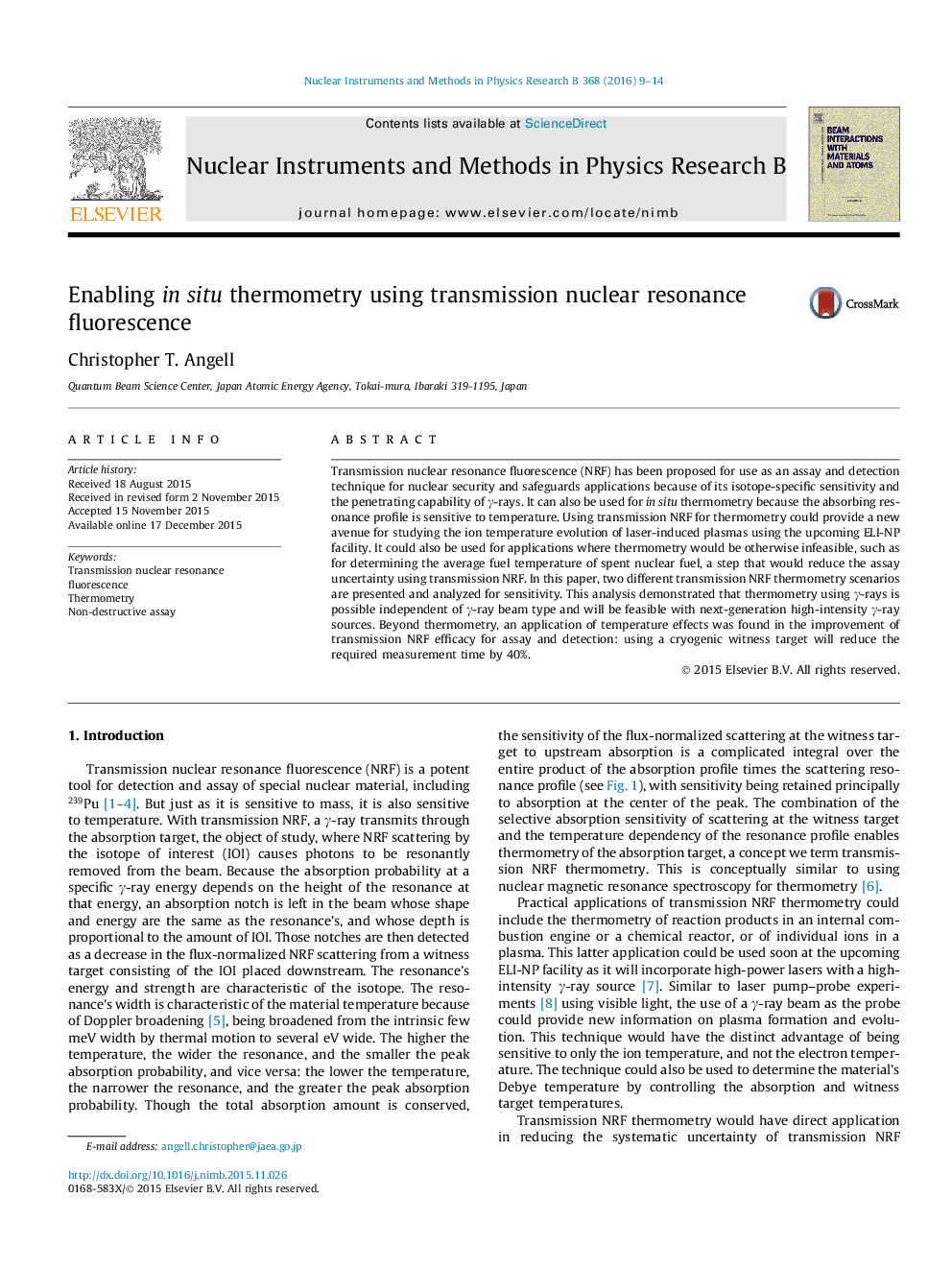| Article ID | Journal | Published Year | Pages | File Type |
|---|---|---|---|---|
| 1681814 | Nuclear Instruments and Methods in Physics Research Section B: Beam Interactions with Materials and Atoms | 2016 | 6 Pages |
Transmission nuclear resonance fluorescence (NRF) has been proposed for use as an assay and detection technique for nuclear security and safeguards applications because of its isotope-specific sensitivity and the penetrating capability of γγ-rays. It can also be used for in situ thermometry because the absorbing resonance profile is sensitive to temperature. Using transmission NRF for thermometry could provide a new avenue for studying the ion temperature evolution of laser-induced plasmas using the upcoming ELI-NP facility. It could also be used for applications where thermometry would be otherwise infeasible, such as for determining the average fuel temperature of spent nuclear fuel, a step that would reduce the assay uncertainty using transmission NRF. In this paper, two different transmission NRF thermometry scenarios are presented and analyzed for sensitivity. This analysis demonstrated that thermometry using γγ-rays is possible independent of γγ-ray beam type and will be feasible with next-generation high-intensity γγ-ray sources. Beyond thermometry, an application of temperature effects was found in the improvement of transmission NRF efficacy for assay and detection: using a cryogenic witness target will reduce the required measurement time by 40%.
